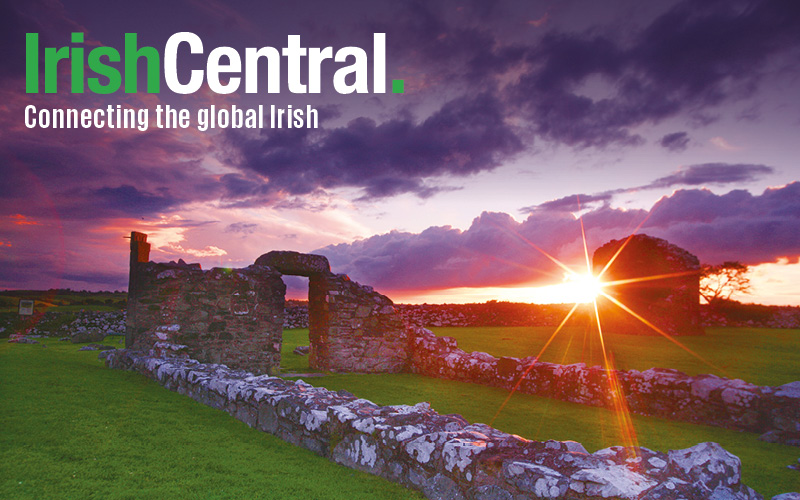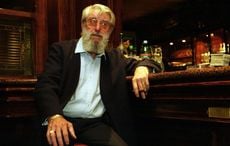| Irish Day of Action - Irish community lends a hand after Sandy |
Some weeks back I had calls from several concerned Irish working to restore Breezy Point and other areas in the Rockaways about the attitude of the New York Times reporter Sarah Maslin Nir who was covering the story.
She seemed intent, according to them, on pointing out to everyone that Breezy Point was a whites only community and that the community there had been accused of racism in the past.
The calls were from people who had flown in from Ireland to help with the restoration of Rockaway and some Irish based here were perplexed at the attitude of the reporter who was making her concerns known loudly.
With good reason. The piece that ran in The Times today is laced with innuendo about the allegedly racist Irish, quoting Al Sharpton prominently calling Breezy Point an “apartheid village.”
(No mention of when Al slandered Irish Americans during the Tawana Brawley hoax case absurdly accusing them of IRA involvement.)
Here’s a typical paragraph from the reporter’s piece. "But complicating the current embrace from abroad is the gated community’s extreme insularity. Breezy Point is the whitest neighborhood in the city, a demographic makeup that critics say illustrates the enclave’s entrenched xenophobia, a dark flip side, perhaps, to all that ethnic pride."
No evidence is given of any xenophobia. Have foreigners been beaten up there? Blacks shot? Has there been massive racist reports from Breezy? Not that I have noticed.
Read more: Irish sports heroes are helping rebuild shattered Rockaways
The facts are very different to this type of innuendo. The Irish community reached out to all residents in Rockaway, Black, Irish, Jewish, Italian and were encouraged to do so by those in Breezy and everywhere else.
I know a little about this. I was at an initial meeting at the Irish Consulate in New York with just Consul General Noel Kilkenny and Deputy Consul Peter Ryan when an Irish initiative to help the Rockaways was discussed.
It was soon after Hurricane Sandy had hit when the issue of what to do about the Rockaways was raised. Noel Kilkenny noted the massive ground swell of emotion in the Irish community to do something to help and asked for my advice.
I had actually gone down to Rockaways the previous weekend and talked to local people there in preparation for the meeting.
It was clear to me that financial assistance was not enough. From all over the Rockaways and Far Rockaways too, the plea was clear, people needed boots on the ground, help digging out. I had liaised with Brendan Brosh, a local Irish American left with a badly damaged home, who works with former Comptroller William Thompson, an African American, who suggested that a major effort across the Rockaways would really help.
Which is why I suggested to the Consul General that Days of Action, not fundraising, be considered, something the community had done very successfully a few years back on the issue of immigration when we sent thousands to Washington for immigration reform. My brother in law, community activist Ciaran Staunton, and I had discussed it on our visit to Rockaways and agreed that while money was great, helping rebuild immediately was much more important.
Read More: Irish emigrants create a stir in Perth as fist fight goes viral - VIDEO
Noel and Peter jumped on the idea and I remember they organized a meeting of community leaders shortly afterwards. They did stellar work setting up the subsequent Days of Action.
Everyone agreed and it was specifically addressed at the first community meeting, that the initiative needed to be Rockaways wide, not just located in the Irish neighborhoods there. It was clear from talking to people down there that many of the hardest hit areas were those where the African American community lived.
Many in Breezy Point made that point to me directly, that bad and all as they were, they had more resources than many of the poorest and hardest hit in other areas that were not Irish. I would say that was a constant refrain.
And so it proved to be.
The two days of action were major successes. Up to 1,000 Irish took part and under the leadership of the Irish Consulate and the Irish immigrant centers as well as locals on the ground like former NYPD officer Brian McCabe, the community spread across the Rockaways, working in every area. Many have returned every weekend since. The Irish Centers in Queens and The Bronx continue to organize relief efforts there which they have done from right after Sandy struck.
I spent a day visiting the sites and the appreciation and the thanks in the African American community was as heartfelt and welcoming as that which was received in Breezy. Everywhere I went I had the impression of people in dire circumstances acting with dignity and resolve and very thankful for the help.
The athletes from Ireland, working on a separate initiative, did a remarkable job working with everyone also. In all the time I spent down there it was an uplifting experience, the Irish government and the Irish American community acting together in common cause. I went so far as to tell Noel Kilkenny and Peter Ryan that it was the Irish community's finest day in America for many a long year.
While acknowledging the good work, The New York Times reporter saw much of it differently. She writes “Even in the days after the storm, volunteer firefighters in the community repeatedly told a visitor as she left to beware of the residents of Far Rockaway, the predominantly black neighborhood at the other end of the peninsula.”
Read More: Eight year path to green cards for illegals in White House proposal
Would the fact that there was a well documented spike in crime after Sandy not have been on their minds when giving her some friendly advice for a woman alone in avoiding such areas? Was it racist to offer some helpful insight?
(These volunteer firefighters would be drawn from the same community which sacrificed so many dead and injured on September 11th 2001 and performed heroically after Sandy.)
It hardly seems fair to let the racist innuendo hang in the air over this story which is a feel good one on so many levels.
But prejudice isn't always about color of the skin, it can be about attitude and a deep mindset which sees communities in cliches and stereotypes whatever the color of the skin.
I certainly think The NY Times has done that on this occasion.




Comments